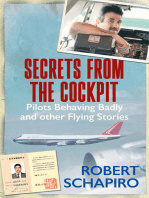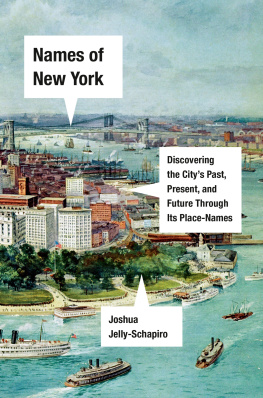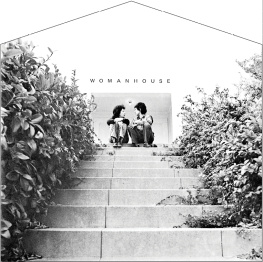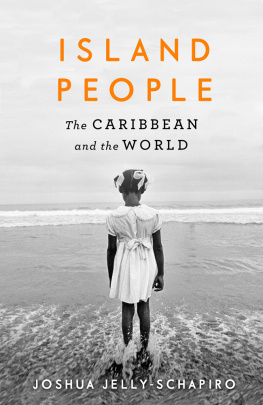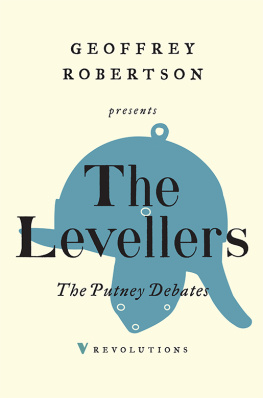Meyer Schapiros Critical Debates
Meyer Schapiros Critical Debates

Art Through a Modern American Mind
C. Oliver ODonnell
The Pennsylvania State University Press
University Park, Pennsylvania
Library of Congress Cataloging-in-Publication Data
Names: ODonnell, C. Oliver (Charles Oliver), 1983 author.
Title: Meyer Schapiros critical debates : art through a modern American mind / C. Oliver ODonnell.
Description: University Park, Pennsylvania : The Pennsylvania State University Press, [2019] | Includes bibliographical references and index.
Summary: Explores the life, career, and intellectual debates of art historian Meyer Schapiro, who worked at the nexus of artistic and intellectual practice and from there confronted some of the twentieth centurys most abiding questionsProvided by publisher.
Identifiers: LCCN 2019025517 | ISBN 9780271084640 (cloth)
Subjects: LCSH: Schapiro, Meyer, 19041996. | Art criticismUnited StatesHistory20th century. | ArtHistory.
Classification: LCC N7483.S292 O36 2019 | DDC 701/.18dc23
LC record available at https://lccn.loc.gov/2019025517
Copyright 2019 C. Oliver ODonnell
All rights reserved
Printed in the United States of America
Published by The Pennsylvania State University Press,
University Park, PA 168021003
The Pennsylvania State University Press is a member of the Association of University Presses.
It is the policy of The Pennsylvania State University Press to use acid-free paper. Publications on uncoated stock satisfy the minimum requirements of American National Standard for Information SciencesPermanence of Paper for Printed Library Material, ansi z 39.481992.
Dedicated to Frances Malcolm
Contents
The concrete outlines of this book emerged out of my participation in a seminar at Columbia University in the spring of 2015 that was dedicated to Meyer Schapiro, organized by Robert Harrist, and co-led by various members of Columbias Department of Art History and Archaeology. The proximity to Schapiros archive and the contact with individuals who had known him personally created an irreplaceable perspective on Schapiros work that shaped the text of the following chapters in innumerable ways. I am indebted to Keith Moxey for his support during my time at Columbia, to Robert Harrist for organizing the seminar itself, and to the seminars participants, including Avinoam Shalem, Daniel Esterman, Kent Minturn, Linda Seidel, Jonathan Crary, Barry Bergdoll, Anne Higonnet, Holger Klein, Stephen Murray, Barbara Rose, and others. Additionally, at Columbia the staff of the Rare Book and Manuscript Library (RBML) was instrumental to my access to and navigation of Schapiros unpublished papers, especially Tara Craig, Jocelyn Wilk, and Tom McCutchon. I relied on the support and expertise of the RBMLs staff throughout the years that it took me to write these chapters; without their work this book would not exist.
I arrived at Columbia in the fall of 2014 as a visiting scholar from UC Berkeley, where I had earlier developed an interest in Schapiro because of his relationship with American pragmatism. I am especially thankful for the mentorship of Whitney Davis, who first supported my interest in Schapiro and in art historiography more generally. My intellectual debt to Whitney is likely larger than I know; his deep engagement with some of the most far-reaching analytic problems of art history has long supplied me with a model for my own scholarship. Martin Jays writing also played an important role for me at Berkeley, and, more recently, he generously read an early draft of this book, providing comments that kept my spirits high. Additional Berkeley faculty who played a part in the earliest stages of this books development include Alva No, Lauren Kroiz, Beate Fricke, and Richard Cndida Smith.
While the origins of this book emerged at Berkeley and its basic outlines formed at Columbia, the book itself was primarily written between 2016 and 2018 at the Kunsthistorisches Institut in Florenz (KHI)Max-Planck-Institut. During this period I was a postdoctoral fellow in the department of Alessandro Nova and a member of the Languages of Art History research group. My work on Schapiro made for an apt contribution to this larger research project for a number of reasons, perhaps most notably because Schapiros thinking emerged out of the intersection of German-, French-, and English-language scholarship and because his deep intellectual network was essential to the integration of French and German writing into the American art world. Moreover, because English emerged over the course of Schapiros career as the most common language of academic discourseart history being no exceptionand because Schapiro is undoubtedly one of the most prominent English-speaking art historians of the twentieth century, the specific case of his life provides a fecund example of how English-language intellectual traditions have refracted with European continental thought in order to shape the global discourse of visual art. I am especially grateful for the support of Alessandro Nova and thankful for the feedback of the other members of the Languages of Art History group, mostly notably Robert Brennan and Marco Mascolo. In addition to granting me the freedom to conduct research and develop the arguments of the book, the KHI further facilitated this project in various ways. Notably, during my time in Florence I was able to participate in several conferences and more informal workshops that helped me complete the manuscript. In this regard, Carolin Behrmann, Felix Jger, Hana Grndler, Georgios Binos, Fabian Jonietz, Dario Donetti, and Brigitte Slch, all of the KHI, helped me. I am also indebted to scholars from other institutions, including Steffen Haug, Malcolm Bull, Michael Schreyach, Yve-Alain Bois, Jrmie Koering, Jean-Claude Lebensztejn, Kerstin Thomas, Edward Wouk, Kate Cowcher, Nikolas Drosos, Natalie Adamson, and Stephanie ORourke. Finally, in Florence I helped organize a conference where I presented some of the material in this book, and the feedback from that event was central to the sharpening of my arguments. From this final context, I am grateful for the comments of Michael Fried, Christopher Wood, Alessandra Russo, Andreas Beyer, and John Leavitt, among others named elsewhere.
Beyond these three institutional contexts, numerous other peers and friends abetted the improvement of the book. The two anonymous peer reviewers for Penn State University Press, for instance, delivered incisive feedback on the manuscript. Moreover, the editorial team at the press, including Ellie Goodman, Hannah Hebert, and Annika Fisher, shuttled the manuscript through the publication process and provided me with excellent insights and professional support over the many months that it took to produce this volume. Other colleagues who helped me with research related to the book include Neil Furman at Argosy Books, Mark Mahoney at the Wenner-Gren Foundation, Lena Newman of Columbias Avery Library, the staff of Harvard University Archives, the staff of Princetons Firestone Library, the staff of Yales Haas Family Arts Library, and the staff of the Getty Research Institute. Additional friends and peers who read the book in draft form and helped me develop it include Sam Rose, who agreed to be the first outside reader of the manuscript; Stephen Bann, who was especially helpful in aiding the improvement of the fifth and eighth chapters; and Andrew Hemingway, whose extensive knowledge of Marxist art-historical scholarship proved invaluable.


